Butterflies are beautiful creatures that can be found in many different parts of the world. There are over 20,000 different species of butterflies, and each one has its own unique diet. If you want to attract them to your yard, you need to know what butterflies eat and drink so they actually show up.
So, what do butterflies eat and drink in the wild? Most people think that butterflies just drink nectar from flowers, but they actually eat a variety of things. Some of the most common foods that butterflies eat include rotting fruit and nectar from flowers. But, that’s not all they enjoy.
There are also some pretty weird things that butterflies eat. Some species of butterfly will eat mud, sweat, or even animal droppings. Some types of butterflies can even eat pollen!
So, if you want to attract a few hungry butterflies to your yard, you need to know what butterfly species are common in your area. Then, have a basic understanding of how and what they eat.
Posts feature partner companies & may be sponsored. Post contains affiliate links & I will be compensated if you make a purchase after clicking on links. As an Amazon Associate I earn from qualifying purchases.
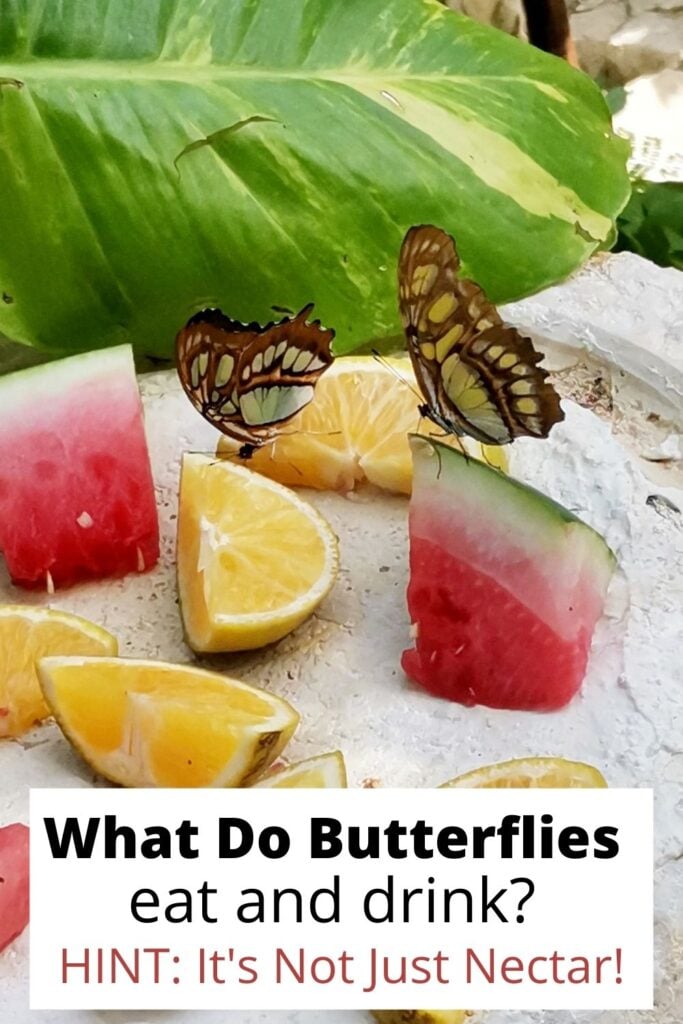
Table of Contents
How do butterflies eat?
A little brief anatomy lesson might be helpful here. No, they don’t have a mouth full of teeth so how do they actually eat?
Adult butterflies are fed with an oblique, straw-shaped mouthpiece called a “proboscis“. This mouthpiece is soft and fragile and only breaks through soft surfaces.
They can extract sugar and salt liquids from fruits or open fluids like pools, flowers, or pools of water. However, butterflies do not chew anything solid. Their food consists only of liquids. The liquids they choose are usually packed with sugar for energy and with minerals and vitamins.
If you look at the butterfly’s head, you won’t see the proboscis at all. If the butterfly isn’t actually eating, the proboscis is curled up. The only time when uncurls is when they are actively feeding.
Related content: If you have children and want to teach them about the anatomy of a butterfly and their life cycle, check out my Etsy shop for a butterfly lapbook to include in your lessons!
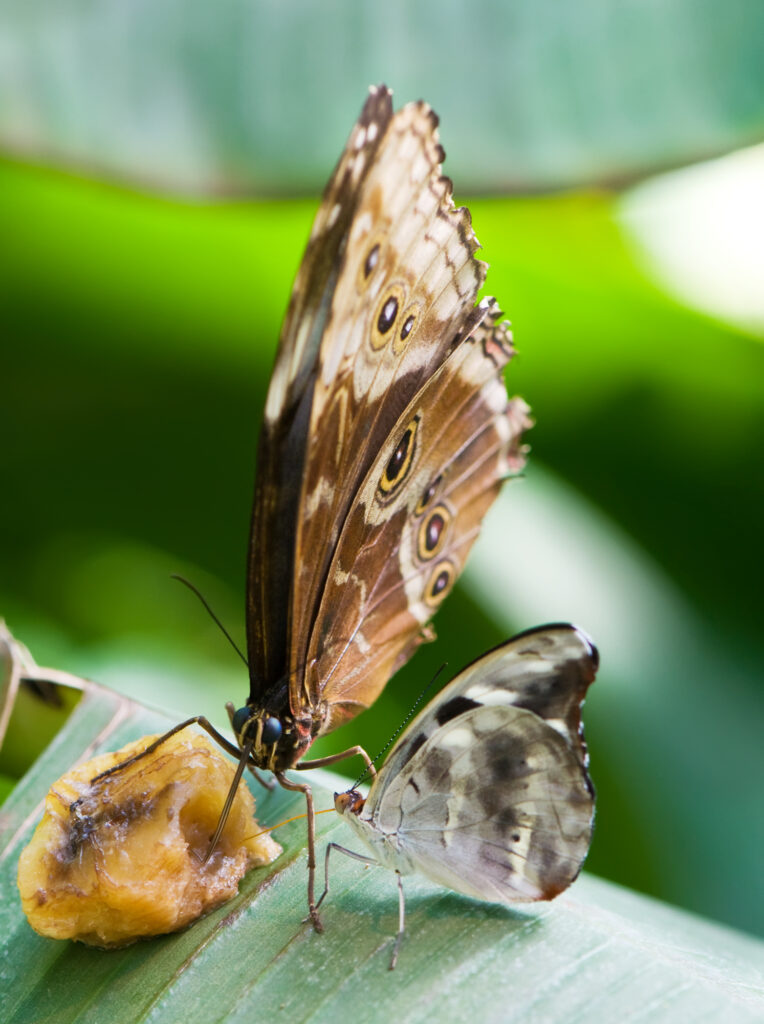
✯Don’t want to miss the next post?✯
Follow Turning the Clock Back on Facebook | Twitter | Pinterest
Or join the private Facebook group for simple tips on going green!
How do Butterflies find food?
A butterfly is a very hungry insect that needs to feed often. They usually have a number of locations in one area that they visit regularly. In order to find food, they need to be able to recognize their favorite plants.
Since butterflies are drawn to colorful things, their surroundings influence where they go and what they eat. Butterflies will choose a feeding spot near a flower with a warm location and plenty of sunlight.
A butterfly’s antennae, legs, and many other parts of its body are loaded with sensory receptors. These receptors are used to smell. Their sense of smell is used for finding food.
So, the combination of bright colors and things that smell good are going to attract butterflies to your yard.

Common things that butterflies eat
So, now that you understand their anatomy and how they find food, you need to figure out what adult butterflies feed on to draw them into your yard. What do butterflies eat and drink most often? Here are the most common foods they look for.
Flower nectar
The most common thing for an adult butterfly to eat will be sweet nectar. Butterflies tend to seek out vibrant colored flowers. This flower nectar is a perfect choice because butterflies love sugary foods. And nectar from flowering plants is basically nature’s version of fruit juice…. sugary and sweet!
Most species will visit flowers as their main food source. Nectar from these flowers makes up most of the butterfly’s diet during its short life.
Related article: Check out my post on Best Perennial Plants for Bees and Butterflies. If you want to include a wide array of nectar-producing flowers that will come back year after year, choose pollinator-friendly perennials. This article will also tell you the difference between a host plant that caterpillars eat and nectar plants for the adult form.
Besides perennials, other flowers also attract several butterfly species to your yard. Most butterflies will seek out just about every colorful flower you can imagine. Plant a wide variety of flowers in vibrant colors and you will see so many butterflies this summer!

Fruit juice from rotting fruit
If you want to attract butterflies to your garden, rotting fruit is an excellent option. Fruit that has fallen off of its tree or plant contains sugary juice that butterflies are after.
If you plant fruit-producing trees, bushes, and plants in your yard, you will naturally attract a few butterflies without even trying. Of course, butterflies will eat fruit from your kitchen, too!
Pick up a few pieces of overripe fruit from the grocery store that are marked for disposal. Place them out on the ground or tie some string around them and hang them up. You can get a hanging ceramic feeder tray and place the rotting fruit in it for them.
Not sure what fruit butterflies love? Bananas are a great choice because they’re easy to find and last relatively long in the hot sun. Other fruit butterflies feed on include watermelon, raspberry, apricots, and most other fruits.
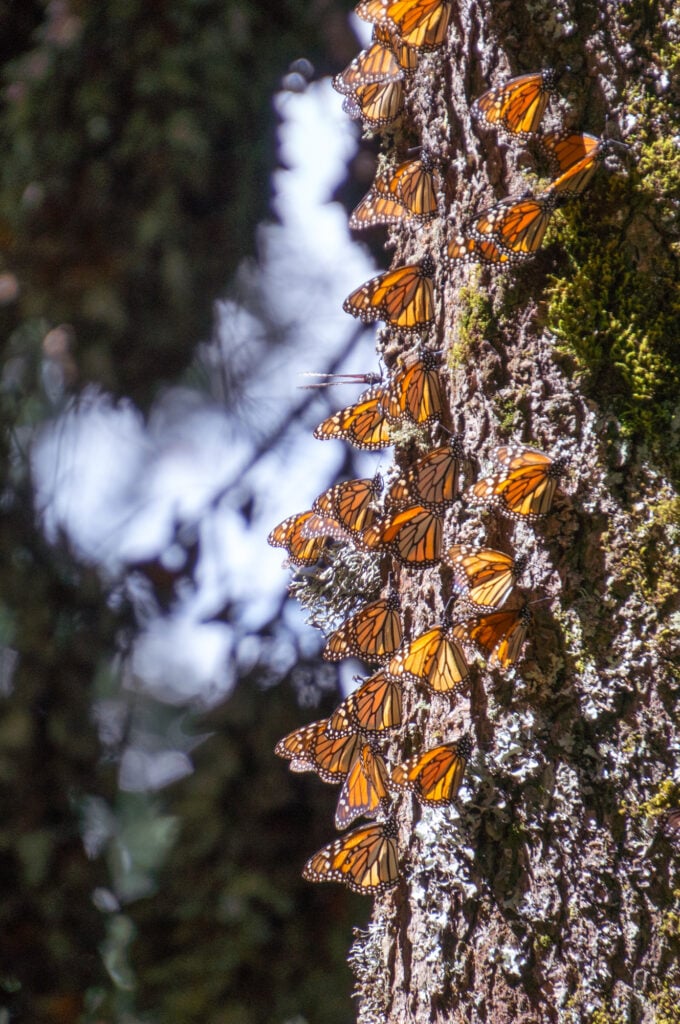
Tree sap
Did you know that butterflies eat tree sap? It’s true. Tree sap is a common food source for adult butterflies. They often get not only water and sugar from tree sap but their essential minerals as well.
Three common species of trees that many butterfly species are attracted to include oaks, willows, and chokecherries. If you want to see more butterflies feeding in your yard and you have a long-term landscaping plan, include a few of those tree species in your yard.
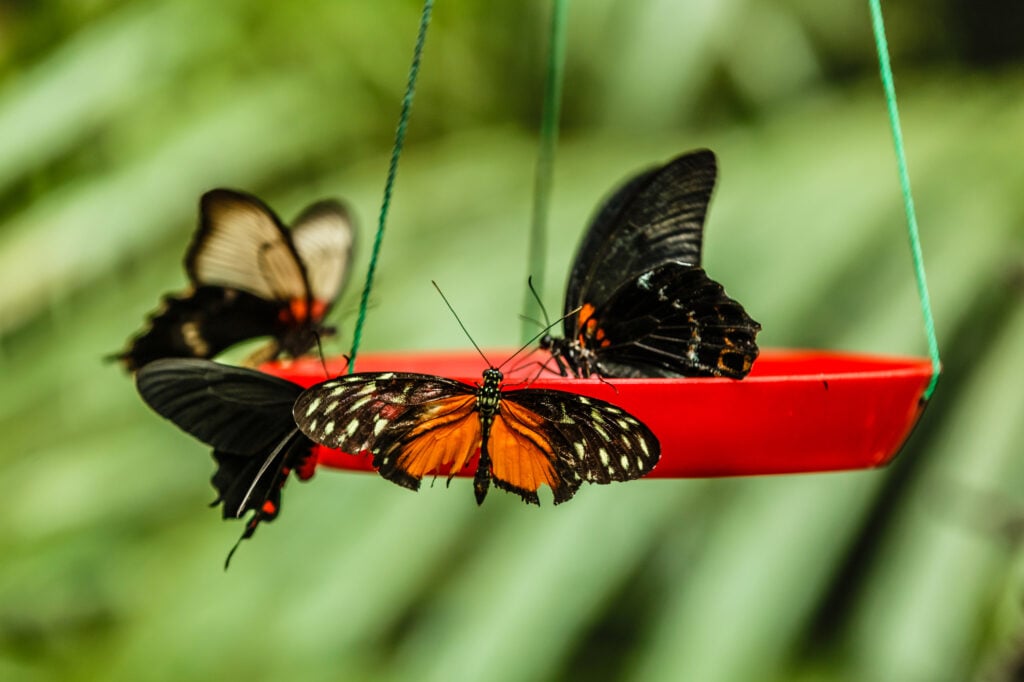
Sugar water from butterfly feeders
Many people have discovered the joy of the backyard butterfly feeder. For those of you who don’t want to do much gardening, you can buy some cheap sugar and make your own DIY butterfly nectar.
To make your own butterfly nectar, you will need just sugar, soy sauce, and water. Butterfly food is 1 one part sugar to 10 parts water. It is not the same as hummingbird nectar. You want a 10% sugar-water solution. The soy sauce adds salt, which butterflies need in addition to sugar.
Butterfly nectar Ingredients:
10 cups water
1 cup white cane sugar
1 Tbsp soy sauce (Regular, not low salt/sodium!)
Directions:
- Add the water to a pan.
- Place the pan on the stove and boil the water for several minutes.
- Take it off the heat and add the sugar. Stir gently.
- Allow the solution to cool to room temperature.
- Add the soy sauce and mix gently.
- Pour this mixture into a glass mason jar.
- Carefully, pour it into a butterfly feeder.
- Store the excess sugar water in the refrigerator for up to 4 weeks
A liquid feeder will need to be cleaned every few days with hot water and a mild (10%) bleach solution to inhibit mold. Rinse thoroughly before refilling with more butterfly nectar. Check out my post on how to make butterfly nectar for another easy recipe, along with ideas for DIY butterfly feeders.
Other weird things butterflies eat
So, butterflies spend most of their time eating nectar, really overripe fruit, tree sap, and butterfly food from your feeder. They flutter around on your butterfly bush and enjoy a variety of sticky liquids, wherever they can find them. What else do they eat? You might seriously be surprised!

Mud
Butterflies often hang out in muddy puddles. They use mud puddles to collect minerals and nutrients. This behavior is called mud puddling, or simply puddling. You can encourage this behavior in your own backyard by putting a butterfly puddling stone near some bright flowers.
Fill the well with sand, mix in a pinch of salt, and pour water over it until a puddle forms on the surface. It’s a great way to provide water and nutrients to an adult butterfly that comes to visit your yard.
Urine
Yes, butterflies drink human pee. Well, not all of it. Butterflies are particularly fond of the urine that collects in public toilets after people have used them to relieve themselves. Gross but true! Urine is loaded with salts that butterflies find immensely appealing. Why drink water when they can drink pee, right?
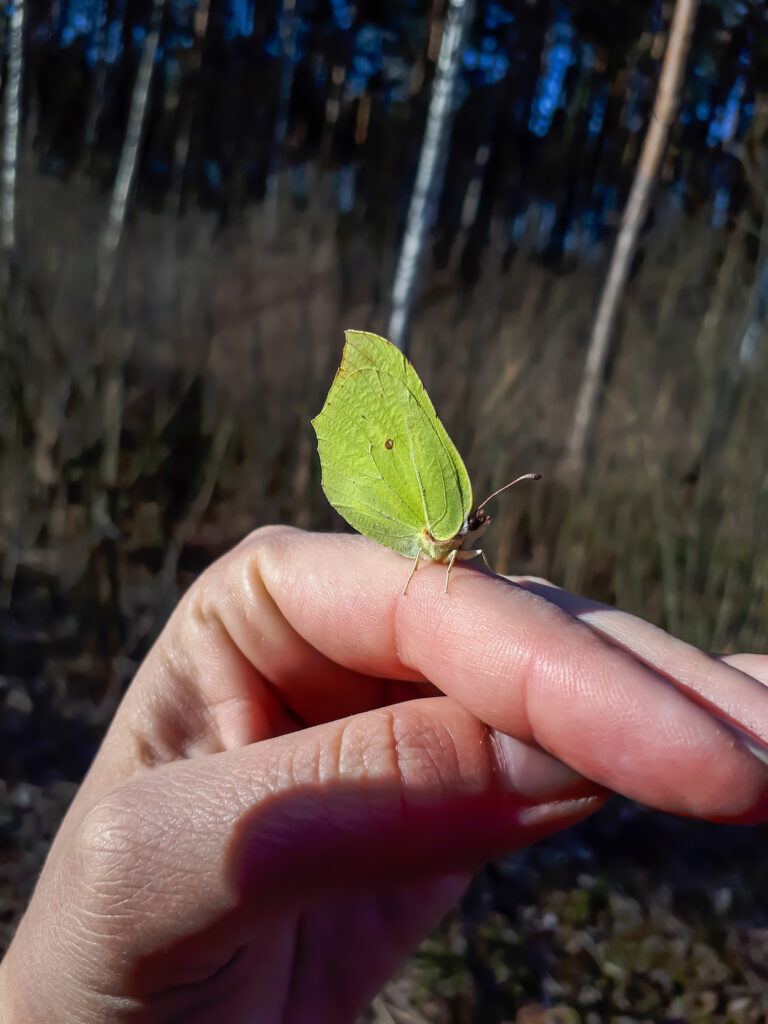
Sweat and tears
Just like urine, sweat and tears are salty liquids that attract butterflies. They will come and land on people’s skin just for a sip of sweat! You think they are being friendly but really, they are looking for salt.
Rotting animals and roadkill
Did you know that some butterflies may visit your garden to feed on the juices of rotting meat or other decaying organic matter. Umm, yum?
Since the adult butterfly doesn’t actually have teeth or a mouth to chew, they are really just licking up the juices from the rotting carcass. Not a pleasant thought but many adult butterflies aren’t all that picky. If it’s a liquid full of nutrients, they will eat it.
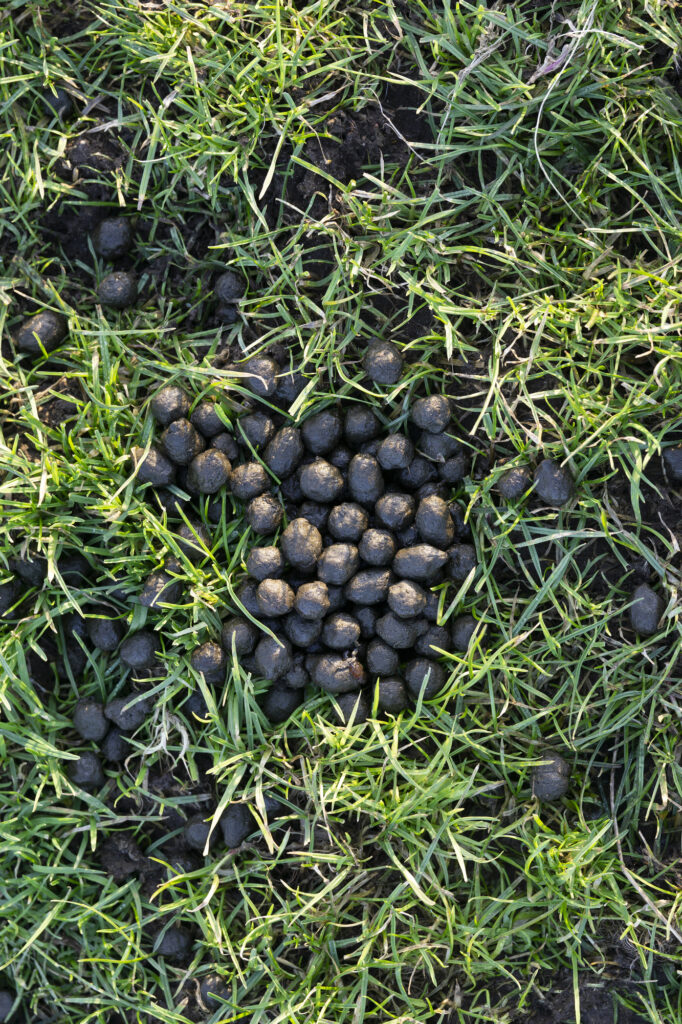
Animal dung
If you want to attract butterflies, get your dog or cat to poop in the yard. Butterflies use animal feces as a source of food and will find it anywhere their ‘noses’ can sniff out.
Of course, any kind of animal dung will work. If you have rabbits in your garden or deer nibbling on meadow flowers, leave the poop to feed butterflies.
Other Insects like Aphids
Can a butterfly eat aphids? Well, not really since they don’t actually ‘eat’ anything solid. Harvester butterflies are the only butterfly found in North America whose caterpillars are dedicated carnivores.
Female butterflies lay their eggs in an area infested with aphids. (woolly aphids are particularly appealing!). Then, the caterpillar hatches and eats aphids as it grows.
Honeydew
Honeydew is a sugar-rich sticky liquid, secreted by aphids as they feed on plant sap. This sticky substance collects on leaves. Adult butterflies use their proboscis to sip the honeydew from the leaves. It really is an amazing relationship!
Pollen
It’s not only bees that love pollen. Butterflies eat pollen, too, although there is a bit of work involved. How do butterflies eat pollen?
The Zebra Longwing butterfly collects pollen on the outside of their proboscis and excretes stomach acids through the proboscis onto the gathered pollen. The acid turns the pollen into a liquid form that can then be slurped up.
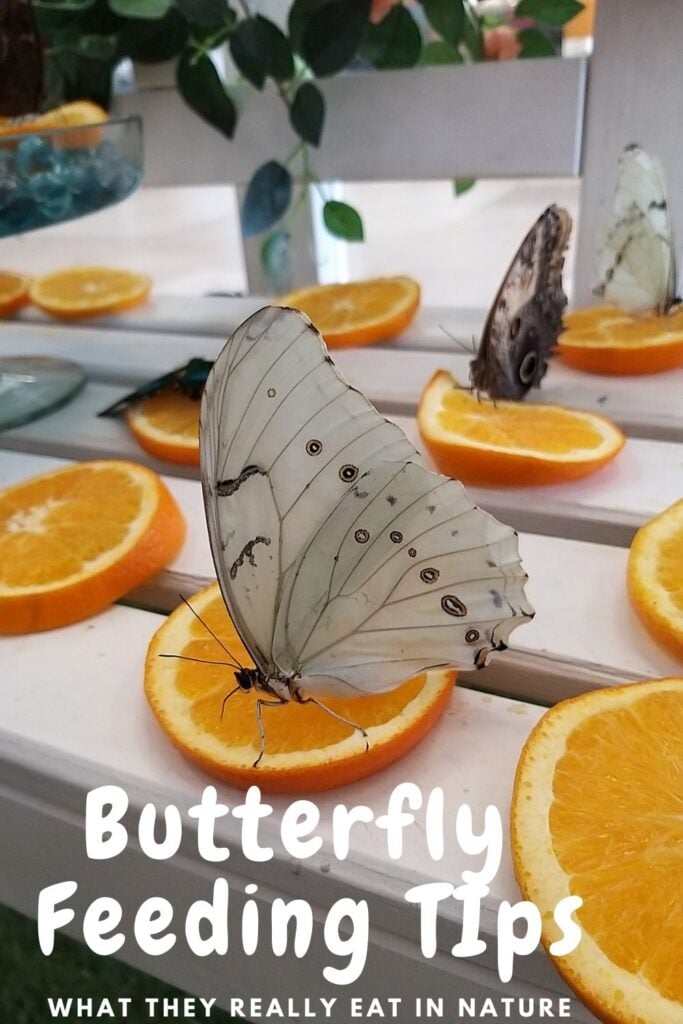
So, what do butterflies eat and drink?
In summary, butterflies have to stick to a liquid diet, however, most butterflies enjoy more than just nectar. Most caterpillars eat leaves on their particular host plants. Then, as they move through their life cycle, they will find an assortment of sweet, salty, and nutritious liquids to feed on.
Once they are fully mature, most butterflies seek out a food source for their larval stage and lay their eggs, thus completing the cycle again. If you want to see many butterflies again next year, feed not only butterflies but caterpillars as well.
How long does a butterfly live? Not very long, sadly. But while they are here, they need a lot of nutrient-rich sources. Check out my article on tips for planting a butterfly garden. Butterflies live a short life but can bring so much joy to our gardens.
Remember, caterpillars eat leaves. But if you want to see adult butterflies, you need to let them. So, skip the pesticides and let the caterpillars and other insects feast in your yard. If you want monarch butterflies or the eastern tiger swallowtail, you can’t kill off their young before they grow up!
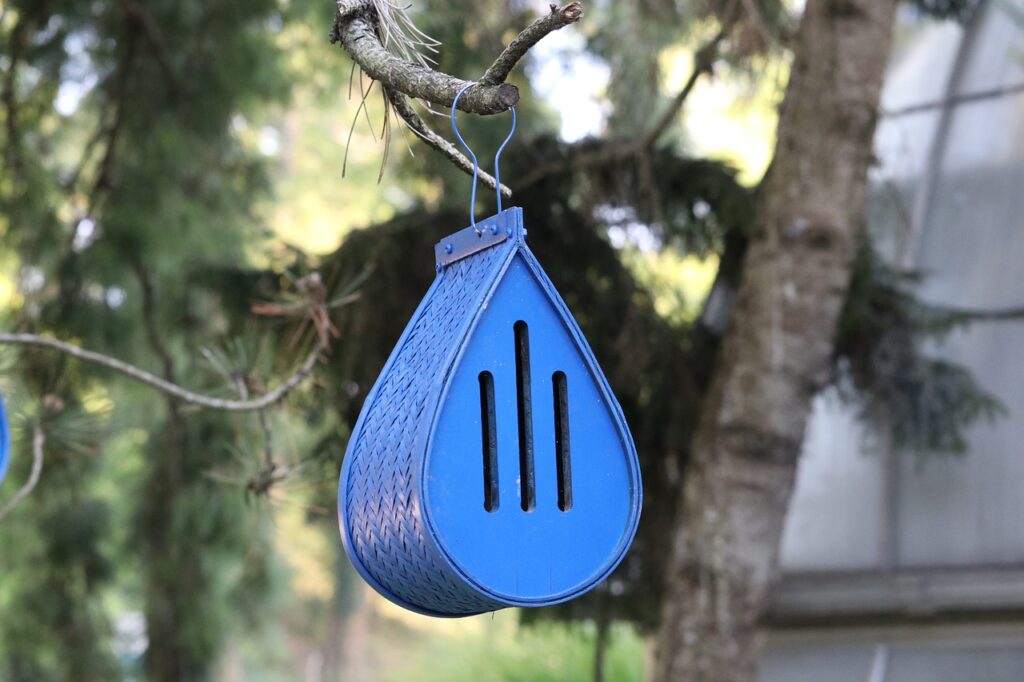
Further Reading
Now that you know what butterflies eat and drink, it’s time to get outside and start planting. Learn more about organic gardening, which will help most butterflies thrive in your yard. Here are a few articles that might help:
- How to grow an organic garden: Basic tips to get you started on a healthy garden that won’t require pesticides.
- 10 Foods that boost soil quality and repel pests: Here are a few foods right from your kitchen pantry that help repel pests, boost soil nutrients, and support an organic garden naturally.
- Cheap and natural organic gardening solutions: Add these natural pest control products to your arsenal of essential gardening supplies this spring!

Diane is a professional blogger and nationally certified pharmacy technician at Good Pill Pharmacy. She earned her BS in Microbiology at the University of New Hampshire and has worked in cancer research, academics, and biotechnology. Concern over the growing incidence of human disease and the birth of her children led her to begin living a more natural life. She quickly realized that the information she was learning along the way could be beneficial to many others and started blogging and freelance writing to share this knowledge with others. Learn more about her HERE.

this info about butterflies is SO interesting! Are you going to plant bananas in your yard? It is kind of gross to learn that butterflies drink human urine—yuk! Incredible to know there are 20,000 different species!I remember at 1565 , we had a butterfly bush in the back yard which attracted LOTS of butterflies! Enjoy your humming birds! They are fascinating little creatures!
Love, DoDo